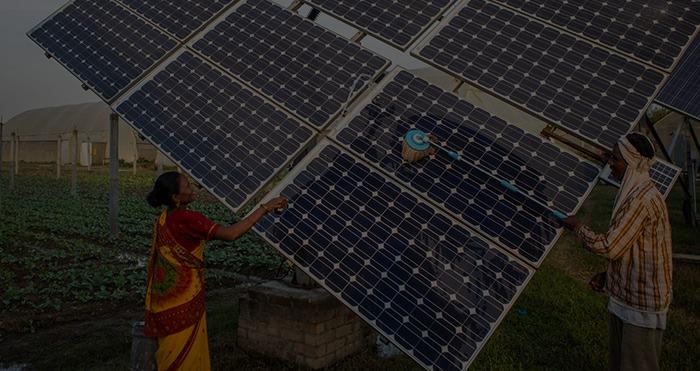Sometime in 2019 or 2020 India will send ISRO’s solar mission Aditya-L1 to a vantage point in space, known as the L1 Lagrange point, to do imaging and study of the sun. This launch will happen in the early part of the next solar cycle – an occurrence in which sunspots form on the face of the sun, growing in size and number and eventually diminishing, all over a period of eleven years. It will be a mission of many firsts.
The so-called L1 point is 1.5 million kilometres away. Here, due to the delicate balance of gravitational forces, the satellite will require very little energy to maintain its orbit. Also it will not be eclipsed from the sun. The 1,500-kg class satellite will be programmed to orbit this point and image the sun’s magnetic field from space for the very first time in the world. Scientists hope to capture the close-ups of the sun from here, uninterrupted by eclipses for years.
Few other space agencies have successfully placed their satellites at this location. Among the few, the Solar and Heliospheric Observatory (SOHO), a NASA-ESA collaboration involving America and Europe, and NASA’s Advanced Composition Explorer (ACE) are at L1 exclusively to study the sun and space weather, respectively. Aditya-L1 is expected to be the very first to study from space two months from the time of launch, the magnetic field of the sun’s corona. The corona is the outer layer that we see during total solar eclipses. It will be the first 100% Indian mission which will not only negotiate a challenging orbit, but will also benefit the global scientific community in understanding the sun.
Deeper look
Earlier, the NASA-ESA mission SOHO was launched in 1995, and while it made many discoveries, its coronagraph, meant to image the sun, broke down shortly after the mission commenced. Hence there is currently no satellite imaging the sun from space. Aditya-L1 will not only fill this gap it will also literally, look deeper into the sun than SOHO. “The nominal mission lifetime is expected to be five years, though it is expected to go on for much longer, perhaps even ten,” says Dipankar Banerjee from Indian Institute of Astrophysics (IIAP), Bengaluru, which is collaborating with ISRO on this project.
The mission will carry seven payloads,consisting of a coronagraph, equipment that will image the sun using ultraviolet filters, X-ray spectrometers, and particle samplers all being made within the country.
The largest payload, or instrument, aboard the satellite, will be the Visible Emission Line Coronagraph (VLEC). This can view the sun more closely than has been done before even by SOHO.
With this advantage, the instrument has the capacity to observe the loop-like magnetic structures that form in the corona, the outer layer of the sun. “This will be the first experiment to measure the coronal magnetic field from a space platform. This was not even done by SOHO,” says Dipankar Banerjee, the Science Working Group Chair of VELC.
Between them, the three payloads — VLEC, the Solar Ultraviolet Imaging Telescope (SUIT) and the X-ray spectrometers — can image the sun in all wavelengths.
Like seasonal changes on the earth, the sun experiences approximately eleven-year-long cycles during which sunspots, caused by the sun’s magnetic field, start forming, increase in the ascending phase and decrease in the descending phase towards the end of the cycle.
“Studying coronal mass ejections [a phenomenon that would correlate with high sunspot activity] is not the only objective. This study can also help us understand the coronal heating problem,” says Prof. Banerjee. The ‘coronal heating problem’ refers to the fact that the photosphere, a deeper layer of the sun, is at a much lower temperature than the outer layer, the corona. Since it is believed that the heating process happens from within, what causes this heating of the outer layer, the corona, remains a mystery. Observations by Aditya-L1 of the magnetic fields bubbling out of the photosphere into the corona will help shed light on this.
First proposed in 2008 as a 400 kg-class satellite with one scientific instrument, a coronagraph, the project has since changed and grown in size and scope. Aditya-L1 will carry seven payloads. Each of these will either image the sun or sample the space around it for traces of charged particles spewed out by the sun during coronal mass ejections.
The payloads alone will weigh close to 250 kg. The biggest of these is the VLEC, about 170 kg. The next is SUIT, weighing around 35 kg; others are much lighter. Orbiting about the L1 point, due to a play of gravitational forces acting on it, Aditya-L1 will require little energy to keep it in place.
The ultraviolet (UV) imaging payload will capture the sun using UV filters, something that is not possible from Earth. the wavelength range 200-400 nanometres. This is The range of ultraviolet light to be observed is prevented from entering the lower layers of the earth’s atmosphere by the ozone layer in the stratosphere. Ozone depletion can lead to this radiation filtering through to lower levels where it can have harmful effects. Since this radiation is stopped at the stratosphere, images of the sun in this wavelength cannot be obtained on earth. Therefore, this will be the first time a UV imaging of the sun will be done.
Durgesh Tripathi and A.N. Ramaprakash of Inter University Centre for Astronomy and Astrophysics (IUCAA) are the principal investigators for the SUIT payload. “When it was decided that the project expanded and the satellite was to be placed in L1 point, ISRO called for proposals for developing more instruments. The original payload was also improved to form the VLEC and six more payloads were added,” says Prof. Tripathi.
Apart from this, the two in situ particle-detection payloads – Aditya Solar wind Particle EXperiment (ASPEX) and Plasma Analyser Package for Aditya (PAPA) will study aspects that affect space weather. the origin of solar wind ions, their reaction to coronal mass ejections, the distribution of these in the heliosphere – the space around the sun that extends up to Pluto – and so on. The various payloads in Aditya-L1 will also study space weather.
Source: http://www.thehindu.com/sci-tech/science/here-comes-the-sun-watcher-indias-aditya-l1/article20942099.ece


